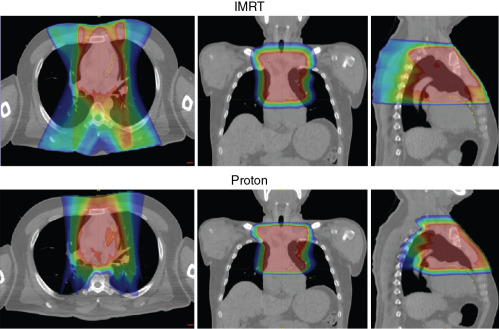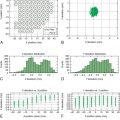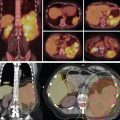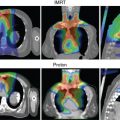Introduction
As early as the 1970s, proton therapy was considered a promising treatment for hematologic malignancies, specifically for use in total nodal irradiation, the historic standard of care treatment for Hodgkin lymphoma (HL). In one report, it was recognized that patients treated with 4000 to 4400 rad to the mantle and inverted Y fields experienced considerable morbidity when treated with standard photons, including, but not limited to, nausea, vomiting, hair loss, and decreased blood counts. The authors suggested that this treatment could be delivered by using proton irradiation, which would not only decrease treatment toxicity but also treatment length because both fields could be treated simultaneously. They also recognized the value in sparing bone marrow, as lymphoma patients often depend on marrow reserves to tolerate chemotherapy. Interestingly, this publication focused on acute toxicities of treatment, as the authors admitted that the time required for documentation of late toxicities had not yet elapsed, although hepatic, cardiac, and pulmonary changes had been documented. They concluded that “the improved dose distribution should be manifested by increased local control of irradiated cancer, as well as by decreased patient morbidity.”
The treatment paradigm for HL and other hematologic malignancies has certainly evolved since those times, with chemotherapy replacing radiation as the primary therapy and the overall focus shifting to de-escalation of treatment, given the excellent treatment outcomes. Because such patients tend to receive treatment at a young age and long life expectancies are anticipated, they must be spared the late toxicities that can manifest decades later. Both chemotherapy and radiation therapy (RT) have been progressively deintensified and optimized; research efforts have focused on identifying the minimum treatment necessary to maintain these excellent outcomes. ,
Proton therapy has, in more recent years, been highlighted once again as a mode of radiation delivery ideal for this patient population. Radiation field sizes and doses have been decreased markedly from the days of total nodal irradiation, and the current standard of care uses a technique called involved-site RT, in which only initial sites of disease are treated, with no elective nodal irradiation performed. Some institutions with workflows that allow prechemotherapy positron emission tomography-computed tomography imaging while the patient is in the radiation treatment position can even achieve involved-node RT, a technique that results in the smallest treatment fields used thus far. With these decreased field sizes and decreased radiation doses, the acute toxicities of treatment are typically not the primary concern. The patient age at treatment, long life expectancy, and close proximity of critical structures (e.g., heart and lungs) necessitate careful consideration of late toxicities of radiation before treatment is prescribed. Therefore, it is imperative that techniques be used to reduce the dose to normal tissues as much as possible. Technology has improved dose distributions of photon treatment and spared normal tissue via implementation of inverse planning with intensity-modulated RT (IMRT). Other modifications of the treatment setup and delivery, including the use of deep inspiration breathhold (DIBH), have strikingly improved the total radiation dose delivered to the heart and lungs. Although these advances are notable, the distinct physical properties of photon treatment that result in exit dose to normal tissues cannot be modified, and many have pointed toward particle therapy with protons as a revolutionary method of radiation treatment delivery for this unique patient population. The unique absence of exit dose achieved with proton therapy (see Chapter 2 ) allows not only decreased dose to specific critical structures but also decreased total body radiation dose (integral dose), which is exceedingly important for patients in whom secondary malignancy is a primary concern.
Dosimetric advantage of protons compared with photon-based three-dimensional conformal and intensity-modulated radiation therapy
More recent investigations of the value of proton therapy for patients with lymphoma have compared the dosimetric advantages of delivering proton therapy versus more conventional RT techniques (e.g., three-dimensional [3D] conformal, IMRT). These reports have usually focused on patients with the most common disease site presentation, the mediastinum. Early comparisons of conventional photon RT with 3D proton treatment for patients with HL confirmed that proton therapy reduced the doses to the heart, lungs, esophagus, and coronary arteries. One report by Chera et al. reproduced treatment plans with 3D conformal RT (CRT), IMRT, and 3D proton therapy for nine patients with early-stage HL without disease involving or below the hila. They concluded that, although IMRT, produced the most conformal high-dose distributions, proton therapy afforded the lowest mean doses to nontarget tissues including breast, lung, and total body. In a similar study comparing 3D CRT, IMRT, and proton therapy for early-stage HL using involved-node techniques, Hoppe et al. concluded that the dose to cardiac substructures (chambers, valves, and vessels) was significantly decreased with proton therapy, and this should translate to a decrease in cardiac toxicity. Proton therapy, when used with involved-node techniques, has been shown to give less dose to the carotid arteries compared with volumetric-modulated arc therapy and mantle field radiation (but not 3D CRT), potential improvements in head and neck treatment delivery for some patients, and the lowest-risk estimates (based on dosimetry) of nearly all esophageal complications when compared with photon-based treatments. A study of pediatric patients with HL determined that proton therapy, when compared with 3D CRT, allowed the reduction of unnecessary breast dose by as much as 80%, and another comparison of passive scatter proton therapy to tomotherapy and 3D CRT also confirmed the advantage of proton therapy for better sparing breast tissue.
Advances in proton therapy, including pencil beam scanning, have allowed additional comparisons. Ten patients with mediastinal lymphoma had RT treatment plans designed for 3D CRT, IMRT, pencil beam scanning (PBS) proton therapy, and proton double-scattering techniques. Authors concluded that PBS significantly decreased the mean lung and mean heart doses compared with the other modalities. They also measured deviations from planned dose and determined that PBS plan robustness can be maintained with repainting or large spot sizes. Although these studies provided valuable information, they did not take advantage of treatment delivery techniques such as DIBH that are known to significantly reduce dose to critical structures such as the heart and lungs. , A more recent publication describing involved-node techniques compared IMRT to PBS proton therapy, each planned using both free-breathing and DIBH planning scans, and estimated the risk of late effects and life years lost for these young patients. Interestingly, IMRT free-breathing plans were inferior to all others, but IMRT DIBH plans were not significantly different from proton free-breathing plans. The lowest number of life-years lost was achieved with proton therapy DIBH plans, although the authors cautioned that this combination is rarely available, and the most likely treatment alternatives will be IMRT DIBH or free-breathing proton therapy. A report by Moreno et al. from MD Anderson similarly concluded that proton therapy is advantageous in the setting of DIBH. IMRT plans using breath hold were comparable in terms of dose to heart, breasts, and coronary arteries when compared with proton free-breathing plans.
Proton therapy for hematologic malignancies outside the mediastinum
In HL patients presenting with subdiaphragmatic disease, proton therapy has also been compared with 3D CRT and IMRT and found to provide significant reductions in dose to structures such as the stomach, liver, pancreas, bowel, and kidneys. For patients with central nervous system (CNS) involvement of leukemia and lymphoma, proton therapy has been implemented to deliver craniospinal irradiation (CSI) before stem cell transplantation. In that work, both photon and proton therapy offered excellent local control, and acute mucositis occurred less often with proton CSI.
Potential for decreased late effects with proton therapy
With all emerging modern technologies that reduce the dose to normal tissues, there are predictions of decreased late toxicity, especially important in this young and favorable-risk patient population. Unfortunately, many late effects of treatment develop decades later, and these findings are not available to inform treatment decisions today. In the absence of this information, practitioners must rely on “worst-case scenario” results from radiation treatments delivered using larger fields, higher doses, and more intensive combination chemotherapy regimens. Alternatively, models may allow prediction of toxicities that patients will experience after these more gentle treatment regimens. An early publication used the International Commission on Radiological Protection calculation scheme to calculate cancer incidence from dose distributions and found that proton treatment would result in lower cancer incidence than photon treatment. In the report by Rechner et al. described above, the authors used dose-effect models based on epidemiological data to estimate the risk of late effects from the compared treatments and to confirm the benefit of proton therapy for long-term patient outcomes. Admittedly, models introduce uncertainty to any conclusions, but the results, especially when used comparatively across different treatments, can allow tentative conclusions to be drawn. That study used normal tissue doses to estimate the incidence of various late effects and to convert those events into number of life years lost, thus taking into account the severity of different late toxicities. A separate study by Maraldo et al. compared proton therapy with photon-based techniques, including mantle field radiation, and confirmed that modern RT provides decreased dose to normal tissues, and proton therapy was superior in terms of life-years lost. Another study of 20 patients with intrathoracic HL compared radiation treatment plans generated for 3D CRT, IMRT (as helical tomotherapy), and IMPT. They estimated IMPT neutron dose from published measurements and used the relative seriality model to predict excess cardiac mortality risk. Excess absolute risk of lung cancer and breast cancer induction was predicted by using a modified linear-quadratic model and with parameters derived from published data. Although no significant difference in predicted excess cardiac risk was found, IMPT decreased the risk of secondary lung cancer and breast cancer when compared with 3D CRT. Another comparison of photon radiation techniques with proton therapy concluded that advanced RT techniques adequately spare normal tissues; however, only proton therapy reduced the risk of secondary malignant neoplasms (estimated via the organ equivalent dose model) compared with 3D CRT and IMRT and tomotherapy increased the risk of secondary breast and lung cancers. These studies provide additional evidence of the benefits of proton therapy for long-term patient outcomes.
Other considerations for using proton therapy for lymphoma
Management of tumor motion
Again, because the most common disease presentation for lymphoma patients involves the mediastinum/thorax, it is imperative that motion management be considered in the simulation and treatment planning process. Although techniques such as DIBH have remarkably improved photon-based treatment plans, this technology is often not available in combination with proton radiation. Without motion management, larger margins must be applied to free-breathing imaging, and these larger margins reduce the benefit of proton therapy in terms of decreased dose to surrounding normal tissues. Studies have shown comparable dosimetric results in terms of proton therapy–delivered free-breathing compared with photon-based IMRT treatments delivered with the breath hold technique. , The density dependence of proton linear energy transfer (see Chapter 2 ) also requires that tumor and normal tissue motion be restricted or carefully accounted for during the treatment planning process. The advantages and limitations of the available technologies must be considered when recommending the best treatment for each patient.
Mediastinal anatomy
The anatomy of the mediastinum/thorax includes numerous critical structures, including the lungs, heart (coronary arteries, valves), esophagus, and brachial plexus. Proton treatment plans should use beam angles that place the distal edge of the Bragg peak in noncritical structures; damage to serial structures such as nerves or vessels from dose underestimation can have devastating consequences. The interface between soft tissue and air or bone (and the displacement of this interface with breathing motion) must also be carefully taken into consideration. The complexities of proton treatment in the mediastinum must not be minimized, and proton treatment should only be delivered by experts who understand these nuances; otherwise, the potential advantage of protons is certainly lost.
Craniospinal irradiation
Proton therapy provides a unique advantage for CSI, as it allows near-complete sparing of organs that lie anterior to the spinal cord, a feat that is impossible to accomplish with photon treatment. Protons have been often implemented for pediatric CSI treatment (see Chapter 15 ), but the benefit has also been shown in adults. However, patients with hematologic malignancies requiring CSI have often received multiple regimens of chemotherapy, usually with CNS-directed or intrathecal treatments, and radiation treatment carries a high risk of CNS toxicity. In these situations, we typically recommend that an additional margin is added anteriorly beyond the spinal cord to avoid the possibility that the distal end of the Bragg peak (with the associated uncertainty and potential high relative biological effectiveness) would overlap with the spinal cord. For patients such as these, bone marrow sparing is also a consideration, and part of the vertebral body can be blocked to allow this, but first and foremost, we must avoid potentially catastrophic side effects of treatment.
Indications
Protons provide a distinct advantage for patients with hematologic malignancies based on their young age at treatment and expected long life expectancy. The potential for decreased dose to normal structures and decreased integral dose should afford lower long-term complication rates, including cardiac and pulmonary disease, as well as lower rates of secondary malignancy. However, depending upon the specific disease presentation within the mediastinum, the use of proton therapy for lymphoma may not provide a distinct advantage when compared with carefully planned and delivered photon treatments. For example, patients with disease involvement that is fully superior to the heart can likely be treated safely with photon-based treatments ( Fig. 14.1 ). Similarly, patients with disease on only one side of the mediastinum and far from the coronary arteries (right-sided disease) can often be treated with favorable photon-based plans, although protons may offer some advantages ( Fig. 14.2 ). However, patients with disease on both the right and left sides of the heart are the ones who most benefit from the use of protons in treatment planning ( Fig. 14.3 ). Also, patients with axillary disease can be treated with posterior proton beams, therefore allowing breast sparing in female patients. Regardless of the clinical characteristics, proton therapy should not be recommended without excellent knowledge of the complexities of treatment so that RT can be delivered safely and effectively.











